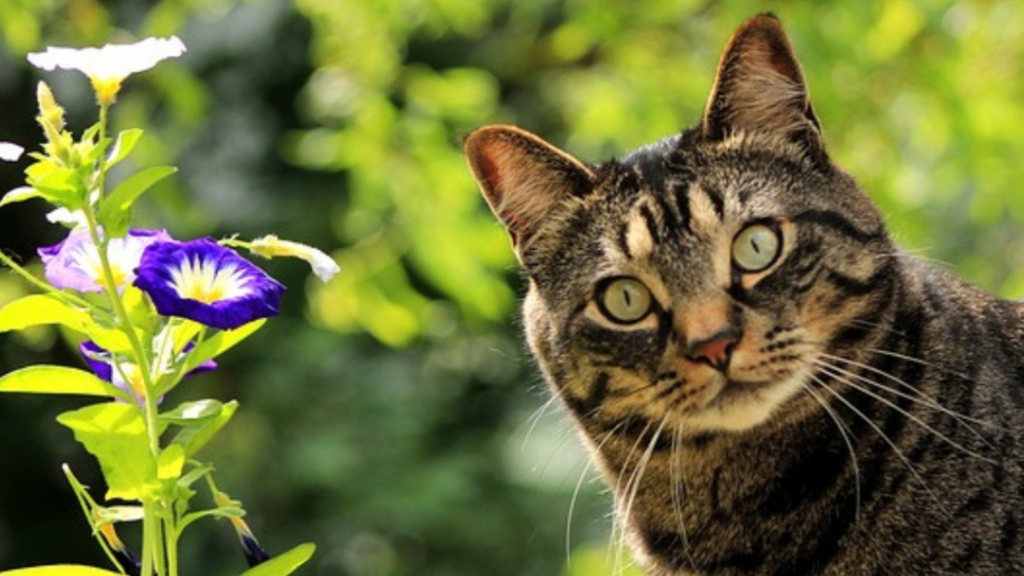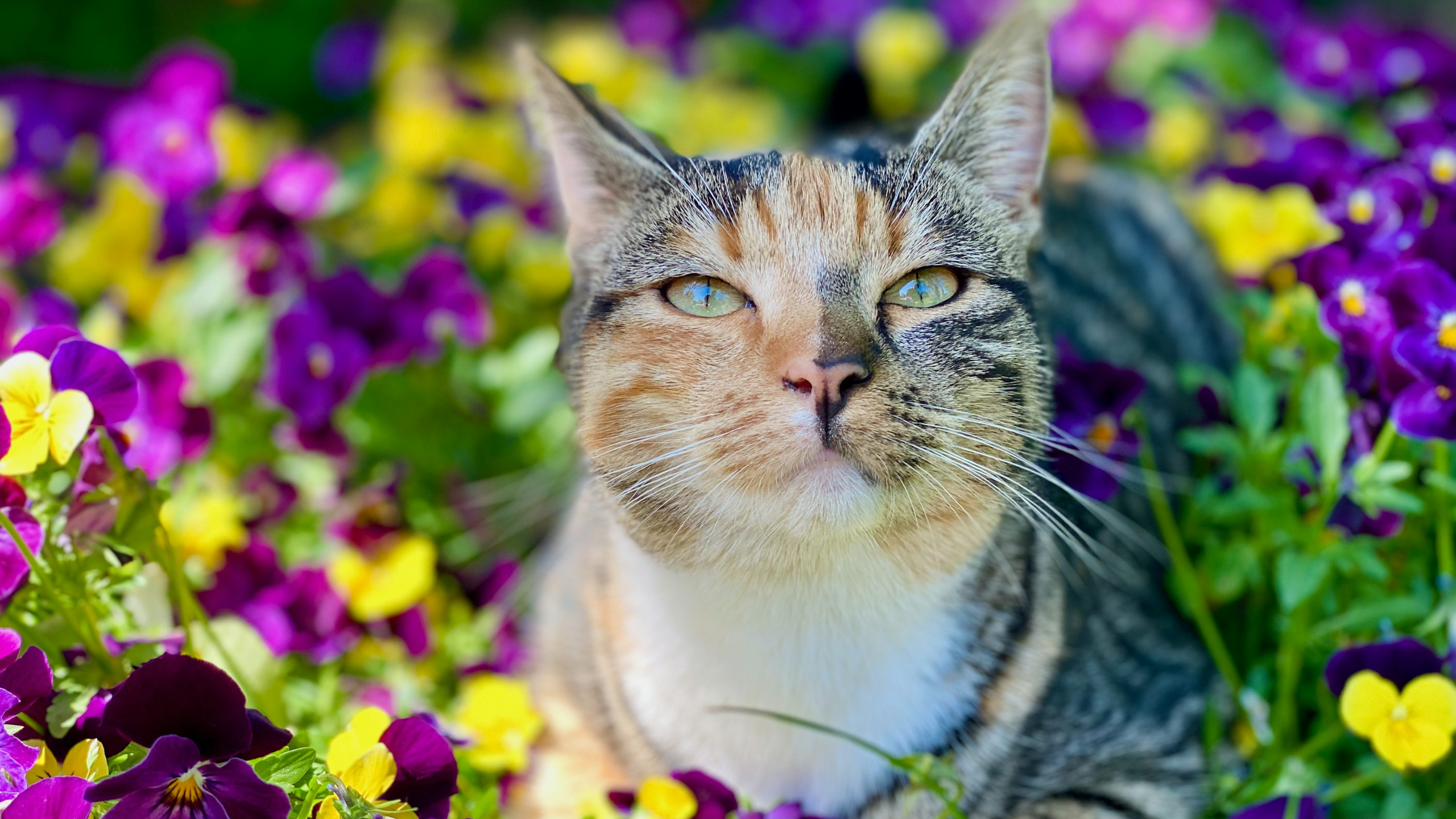Spring brings a vibrant array of flowers that color our gardens and brighten our homes. However, for cat owners, it’s crucial to be aware of which flowers can be harmful to our feline friends. This guide dives into the most popular spring flowers that are toxic to cats, helping you create a safe and beautiful environment for both your pets and your plants.
Understanding the Risks
As much as we love bringing nature indoors, certain flowers pose risks to our cats’ health. These plants contain compounds that can be harmful or even fatal if ingested. Even if your curious kitty only takes a nibble, it’s important to recognize the potential dangers.
Let’s explore the flowers featured in the illustration and discuss their toxicity levels, symptoms to watch for, and safer alternatives.
1. Amaryllis
Description: Amaryllis flowers are known for their striking bright red petals. They bloom in early spring and can be a stunning addition to your decor.
Toxicity: Amaryllis bulbs, in particular, are toxic to cats. If ingested, they can cause symptoms such as vomiting, diarrhea, and abdominal pain.
What to Watch For: Keep an eye out for signs of distress in your cat if you have these flowers in your home. If you suspect your cat has ingested any part of the plant, consult your veterinarian immediately.

2. Lilies
Description: Lilies are some of the most beautiful blooms of spring, often prized for their elegant appearance and delightful scent.
Toxicity: Unfortunately, all types of lilies are considered extremely toxic to cats, with the potential to cause acute kidney failure.
What to Watch For: Symptoms include vomiting, lethargy, and a lack of appetite. If ingested, even small amounts can lead to severe consequences, so it’s best to avoid these flowers altogether if you have cats.
3. Daffodils
Description: With their cheerful yellow flowers, daffodils are a sure sign that spring is here. They can be found in many gardens and floral arrangements.
Toxicity: Daffodils contain a chemical called lycorine, which can cause gastrointestinal distress in cats.
What to Watch For: Familiarize yourself with symptoms like nausea, vomiting, and even more severe issues like cardiac arrhythmias. Always contact a veterinarian if you notice these signs after your cat has interacted with a daffodil.
4. Crocus
Description: Crocuses are often among the first flowers to bloom in spring, showcasing vibrant purple and yellow hues that beckon warmer weather.
Toxicity: While some species are less toxic than others, the spring-flowering crocus can still cause gastric upset if consumed.
What to Watch For: Look out for signs like vomiting or diarrhea. If you suspect your cat has eaten a crocus, reach out to your vet for advice.
5. Hyacinths
Description: Hyacinths are popular for their dense clusters of fragrant flowers, which can be blue, pink, or purple.
Toxicity: The bulbs are particularly poisonous and can lead to serious clinical symptoms in cats.
What to Watch For: Symptoms can include drooling, vomiting, and diarrhea. Ensure the bulbs are kept out of reach of curious paws.
6. Tulips
Description: Tulips are classic spring flowers known for their simple yet stunning structure and diverse color palette.
Toxicity: Tulips contain a toxin that can create gastrointestinal problems for cats, particularly in large amounts.
What to Watch For: If your cat nibbles on a tulip, you might see symptoms like swelling of the mouth and difficulty swallowing. Monitor them closely and consult a vet if needed.
7. Peonies
Description: Peonies are beloved for their lush blooms and rich fragrance, often a favorite in spring bouquets.
Toxicity: Peonies are considered mildly toxic to cats. While they may not cause severe health issues, they can lead to discomfort.
What to Watch For: Symptoms may include nausea and vomiting. It’s best to keep these flowers out of reach if your cat enjoys exploring.
Creating a Safe Environment
Now that you’re aware of these toxic flowers, what can you do to create a cat-friendly space?
- Choose Non-Toxic Alternatives: Consider planting pet-safe flowers such as marigolds, snapdragons, or petunias to keep your garden colorful without risking your cat’s health.
- Educate Yourself and Others: Share this information with friends or family who own cats. Raising awareness can prevent potential health hazards.
- Monitor Your Cats: Keep an eye on your cats while they explore your home and garden. Awareness is key to avoiding accidental poisoning.
Conclusion
Spring is a beautiful time filled with blooming flowers, but it’s essential to prioritize the safety of our pets. By being knowledgeable about which plants are toxic to cats, you’ll be better equipped to create a lovely and safe environment for both your flowers and your furry companions. Always consult your veterinarian if you have any doubts or if your cat shows signs of distress after interacting with plants.
Feel free to leave any comments or questions below, and let’s make this spring safe and vibrant for everyone!


https://t.me/s/Martin_casino_officials
VIP-Programme bieten Spielern exklusive Vorteile wie persönliche
Betreuer und maßgeschneiderte Bonusangebote. Jeden Donnerstag findet der Tag der
1.000 Freispiele statt, wo bis zu 500 Freispiele möglich sind.
Freispiele sind für Bestandskunden verfügbar, die bei einer Einzahlung von mind.
Als deutscher Vorreiter gilt die Spielbank Hamburg, die im Jahr 2002 ihr eigenes
Online-Portal veröffentlichte und somit auch
als Vorbild für Konkurrenzanbieter diente. So weißt du, dass deine Lieblingsspiele bequem auch unterwegs spielen können. Erfahrene Spieler setzen aber eher auf
die einschlägigen Angebote mit einer nicht-deutschen Lizenzierung.
Natürlich fällt es schwer, Strategien bei reinen Glücksspielen zu entwickeln. Deshalb muss
ein guter Support vorhanden sein, um von Automatenspieler den Daumen hoch zu
bekommen. Nur wer in diesen Bereichen gut abschneidet, kann von Automatenspieler auch empfohlen werden.
Stargames gehört noch zu den neueren Online Casinos und Spielbanken mit deutscher Lizenz.
Wir haben Online Spielotheken mit deutscher Lizenz für euch getestet und zeigen euch
hier die zehn besten Online Casinos und Spielbanken in Deutschland in 2025 auf.
Spellwin Casino im Test 2025 – Ist es das beste deutsche Online Casino mit Echtgeld?
References:
https://online-spielhallen.de/lex-casino-cashback-ihr-weg-zu-mehr-spielguthaben-und-boni/